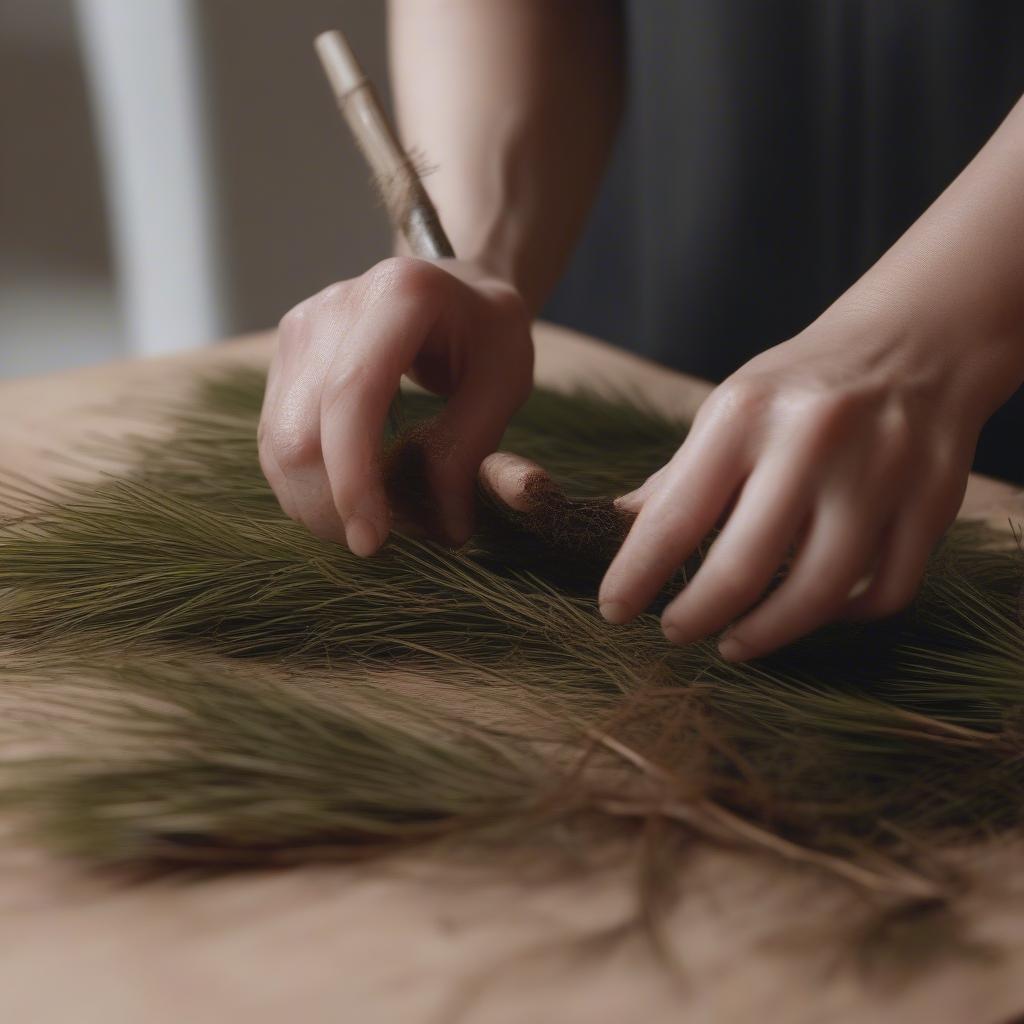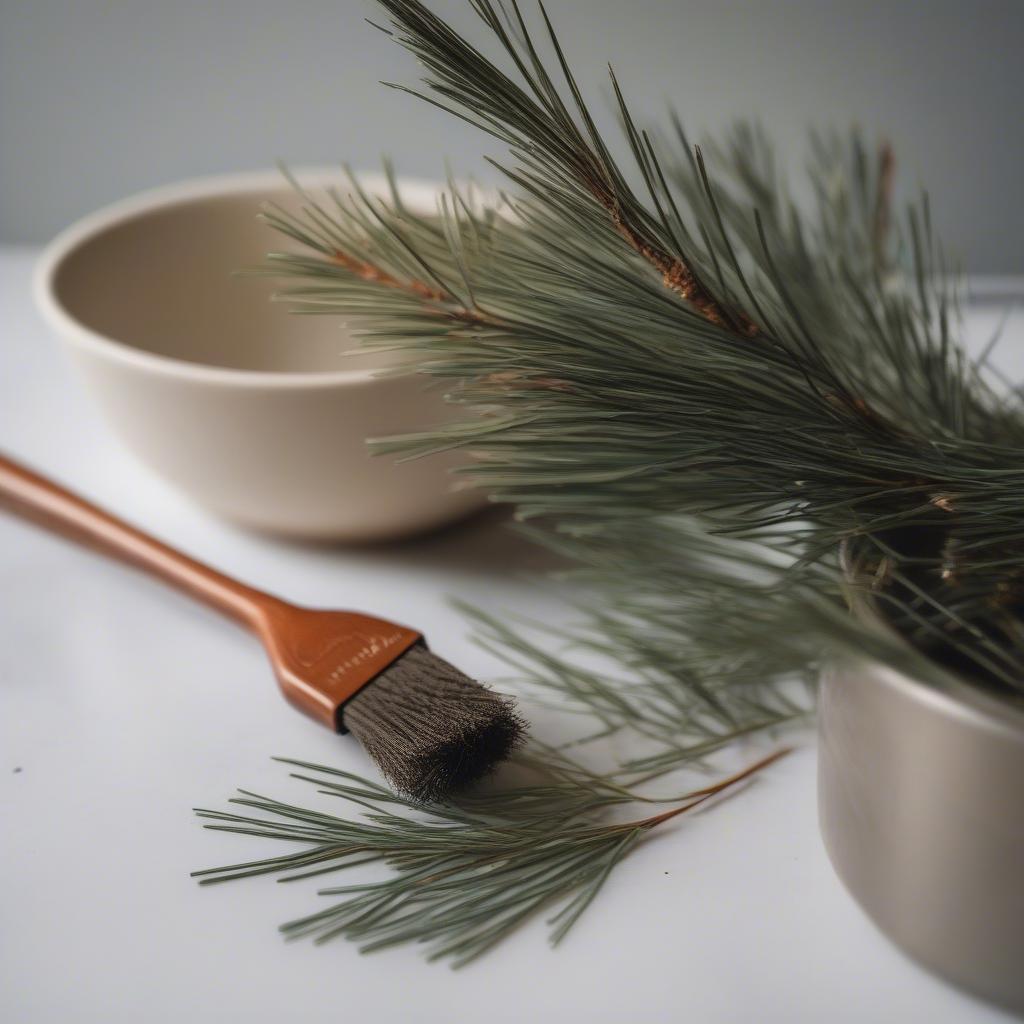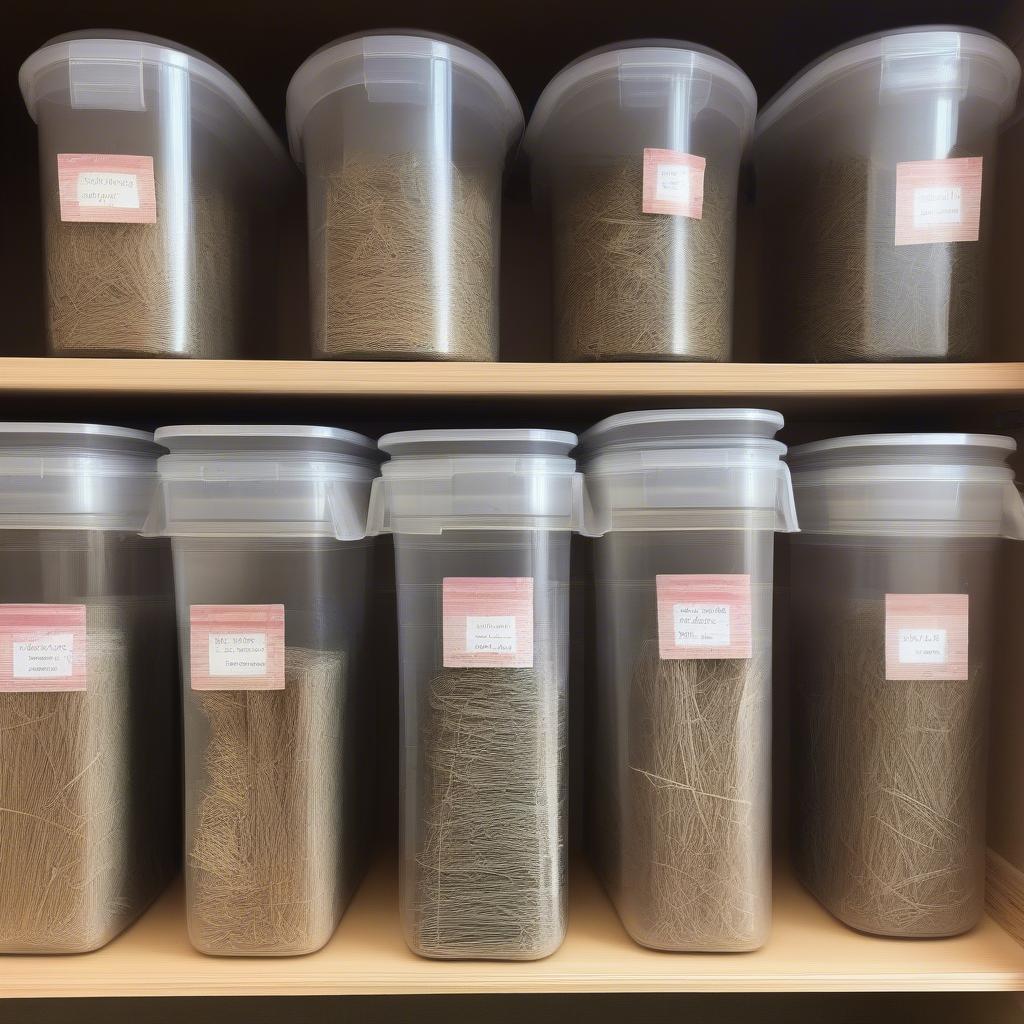Basket Weaving
How to Clean Pine Needles for Basket Weaving
Cleaning pine needles is a crucial first step in pine needle basket weaving. It ensures a beautiful, long-lasting finished product and makes the weaving process smoother.  Cleaning Pine Needles for Basketry This guide will take you through the process step-by-step, ensuring you have pristine needles ready for your next project.
Cleaning Pine Needles for Basketry This guide will take you through the process step-by-step, ensuring you have pristine needles ready for your next project.
Why is Cleaning Pine Needles Important?
Before we dive into the “how-to,” let’s discuss the “why.” Uncleaned pine needles can harbor dirt, sap, insects, and other debris. These impurities not only affect the aesthetics of your basket but can also weaken the fibers over time, leading to a less durable final piece. Cleaning also enhances the natural color of the pine needles and makes them more pliable, which is essential for weaving. Think of it like preparing ingredients for a recipe – the cleaner and fresher your ingredients, the better the outcome.
You might be interested in learning more about pine straw basket weaving.
Gathering Your Pine Needles
The best time to collect pine needles is in the fall or winter after they have fallen naturally. Avoid pulling needles directly from trees as this can harm the tree and the needles will likely be less pliable. Choose long, straight needles that are free from obvious damage. Once collected, spread them out in a single layer to dry in a well-ventilated area for a few days. This drying process helps to further remove moisture and make cleaning more effective.
A Step-by-Step Guide to Cleaning Pine Needles for Basket Weaving
Now that your needles are dry, it’s time to get cleaning. Here’s a detailed guide:
-
Sorting: Begin by sorting through your dried pine needles and removing any twigs, leaves, or other debris. Discard any needles that are broken, discolored, or excessively curved.
-
Soaking (Optional): Some weavers prefer to soak their pine needles in warm water for a short period (15-30 minutes) to soften them and make cleaning easier. This step is especially helpful for stiffer needles.
-
Scrubbing: Gently scrub the pine needles with a soft-bristled brush, like a toothbrush or a vegetable brush, to remove any remaining dirt or sap.
 Scrubbing Pine Needles with a Brush You can also use a damp cloth to wipe down individual needles if necessary.
Scrubbing Pine Needles with a Brush You can also use a damp cloth to wipe down individual needles if necessary. -
Rinsing: If you chose to soak the needles, rinse them thoroughly under cool running water to remove any remaining soap residue.
-
Drying: Spread the cleaned pine needles out on a clean towel or drying rack in a single layer. Allow them to dry completely before beginning your basket weaving project.
Have you considered waxed linen basket weaving instructions for beginners?
Tips for Cleaning Different Types of Pine Needles
Different types of pine needles may require slightly different cleaning methods. For example, longer needles, like those from Ponderosa pines, might need more soaking time, while shorter, finer needles may not require soaking at all. Experiment to find what works best for the specific type of pine needle you are using.
“The cleanliness of your pine needles significantly impacts the quality and longevity of your basket,” says renowned basket weaver, Anya Petrova. “Taking the time to properly clean and prepare your materials is a crucial step that shouldn’t be overlooked.”
Storing Cleaned Pine Needles
Once your pine needles are clean and dry, store them in a cool, dry place, preferably in an airtight container or bag, to protect them from dust and pests. Proper storage will help maintain their flexibility and ensure they are ready for your next weaving project.
You can explore the rich history of basketry with art landscape with native american basket weaving.
Conclusion
Cleaning pine needles for basket weaving might seem like a small detail, but it makes a significant difference in the final product. By following these simple steps, you’ll have clean, pliable needles ready for weaving beautiful, long-lasting baskets. So, take the time to properly clean your pine needles and elevate your basket weaving to the next level!
FAQ
-
Can I use bleach to clean pine needles? It’s best to avoid using harsh chemicals like bleach, as they can damage the fibers and affect the natural color of the needles.
-
How long can I store cleaned pine needles? Properly stored pine needles can last for several months or even years.
“I’ve found that adding a drop of essential oil to the soaking water can not only add a pleasant scent but can also act as a natural insect repellent,” adds Anya Petrova, offering a valuable tip for long-term storage.  Storing Cleaned Pine Needles
Storing Cleaned Pine Needles
-
What kind of brush is best for cleaning pine needles? A soft-bristled brush, like a toothbrush or vegetable brush, works well for cleaning pine needles without damaging them.
-
Do I have to soak the pine needles before cleaning? Soaking is optional but can be helpful for softening stiffer needles.
-
Can I use green pine needles for basket weaving? While you can use green pine needles, they are more difficult to work with and may shrink or warp as they dry.
Perhaps you’d like to explore pine needle basket weaving with walnut.
-
What if my pine needles are still sticky after cleaning? If your pine needles are still sticky, try repeating the cleaning process or using a slightly damp cloth to wipe them down.
-
Can I use other natural materials for cleaning pine needles? Yes, some weavers use natural cleaning solutions like vinegar or baking soda.
You might also be interested in exploring coiled basket weave.
If you require any assistance please contact us: Hanoi, Vietnam hoặc Tech Avenue, Suite 12, San Francisco, CA 94105, USA. We have a 24/7 customer support team.
